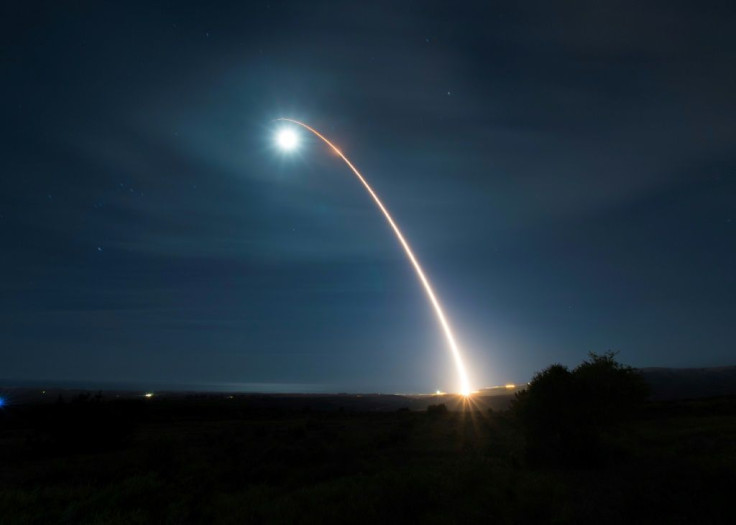China Plans To Double Its Nuclear Weapons Capability Over Next Decade, Pentagon Reveals
KEY POINTS
- China continues to try to close the strategic nuclear gap with the U.S.
- Beijing is intent on doubling the size of its strategic nuclear arsenal to some 400 warheads
- A Pentagon report says China's nuclear forces "will significantly evolve over the next decade"
China is continuing the build-up its strategic nuclear forces in a direct challenge to the U.S, a new report from the Pentagon says.
Assistant Secretary of Defense Chad Sbragia estimated China might well double the number of nuclear warheads it possesses to about 400 over the next decade as it seeks to close the strategic nuclear gap with the U.S. The new Chinese warheads would be deployed aboard China's land-based intercontinental ballistic missiles (ICBMs) or on missile-carrying submarines capable of hitting targets in the continental U.S.
Speaking at the American Enterprise Institute recently, Sbragia talked about the findings in a newly released Department of Defense report: "Military and Security Developments Involving the People's Republic of China - 2020."
"The report does contend that there are currently an estimated low-200s in terms of warhead stockpiles, and it's projected to at least double in size over the next decade as China expands and modernizes its nuclear forces," Sbragia said.
The projected numbers pale in comparison to the U.S. nuclear arsenal, which has more than 3,800 active warheads of all classes. In addition, the U.S. has some 2,000 warheads that are waiting to be dismantled. The 2010 New Strategic Arms Reduction Treaty (New START) allows the U.S. only 1,550 nuclear warheads on 800 strategic launchers; only 700 of these can be deployed.
Sbragia said China could attack the U.S. with these weapons by developing a "nuclear triad" similar to the one the U.S. has in place. He said the report also notes China is expanding, modernizing and diversifying its nuclear forces across the board.
"Just looking at the number of warheads by itself is not the entire picture, or doesn't paint a holistic understanding of where the Chinese are or where they want to go."
Assembling a nuclear triad over the next decade would mean China will have to expand its ballistic submarine fleet and deploy more capable, longer-range, sea-launched ballistic missiles (SLBMs). It also plans to finish developing nuclear-capable, air-launched ballistic missiles along with bombers to deliver its nuclear warheads. On the ground, China plans to field more mobile ICBMs and might expand its silo-based ICBM capability.
The report says China's nuclear forces "will significantly evolve over the next decade as it modernizes, diversifies, and increases the number of its land-, sea-, and air-based nuclear delivery platforms."
It will do so unrestrained by any treaty, such as New START. China continues its stubborn resistance to joining any treaty limiting the development and deployment of its nuclear weapons. Over the past decades, the U.S. has sought to include China in its nuclear arms control talks with Russia but without success.

© Copyright IBTimes 2025. All rights reserved.





















